

Content is everywhere! It is the heart of every digital marketing strategy. Since everything is online these days, you can’t even think of marketing without Content Marketing. By providing an attractive return on investment and creating a stronger customer base by guaranteeing an incredible experience, Content Marketing helps you set yourself apart from your competition. No matter how big or resourceful they are.
Content Marketing can give you the opportunity to build yourself as an authoritative brand with less than half the cost of traditional marketing. Smart and efficient content marketing might just be the thing you need to take your business to the next level. Lastly, Content Marketing is good for your bottom line!
So, Valuable Content Should Be The Core of Your Marketing!
Table of Contents
Content Marketing! And Why Content is King.
When you hear the term “Content Marketing,” it probably makes you think about blogs, Twitter, Facebook, and viral YouTube or TikTok videos. But it is so much more than that!

Content Marketing Institute defines content marketing as –
“A strategic marketing approach focused on creating and distributing valuable, relevant, and consistent content to attract and retain a clearly defined audience — and, ultimately, to drive profitable customer action.”
To put it simply, content marketing is a form of marketing that is focused on creating, publishing, and distributing content for a targeted audience online. In the words of bestselling author Avinash Kaushik, “Content is anything that adds value to the reader’s life.”
In essence, the foundation of content marketing is high-quality content and storytelling.
But we see content in many forms including e-books, social media, paid ads, billboards, news, video, white papers, infographics, email newsletters, case studies, podcasts, how-to guides, Q&A articles, photos, blogs and so much more. Content marketing aims at attracting new customers by creating and sharing valuable content for free.
The art of storytelling has changed over the years, just like the attention span and interest of people, and marketers have to keep up with that. We have to make sure that, as marketers, we tell stories in the year we actually live in. This translates to giving the people what they want and need, even when they don’t know what they want. As Leo Burnett said, “What helps people, helps business.”
Remember that people only buy from a business that they connect with. And consumers usually connect with businesses that make them Laugh, Cry, or Share!
Why Content Marketing?
Content marketing has gone from an exciting marketing concept to an essential marketing powerhouse for pretty much every business in almost every industry. If you’re asking yourself, “Is content marketing really necessary for my business?” The answer is a resounding YES!
Content marketing has an incredible potential to build your business reputation online. And content marketing provides conversion rates about 6 times higher than other digital marketing methods.
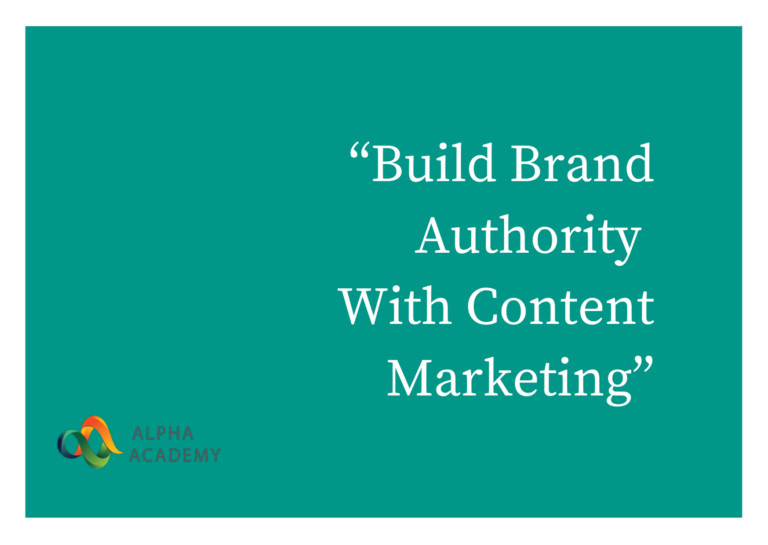
By offering value through a range of content, you not only entice the viewer but also build brand trust. Brand value, brand trust, brand attitude and brand attachment positively influence customers purchase intentions, commitment and loyalty.
According to Content Preferences Survey Report 2021, buyers demand rich content experiences and 62% of respondents said they rely more on content to research and make purchase decisions. The survey showed that many respondents pointed to “practical” content to guide their buying decisions, citing a higher emphasis on the trustworthiness of the source. For example, case studies, visual content, webinars etc.
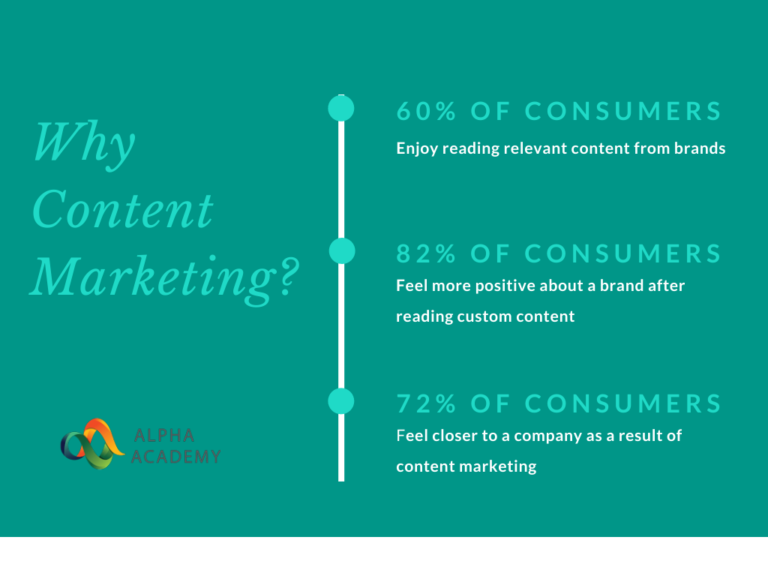 Source: Demand Metric
Source: Demand Metric
Content plays a critical role in achieving business objectives such as brand recognition, thought leadership, audience engagement, lead generation and much more. It allows you to secure your position as a go-to destination for your customers, whether it be for recreation, education, or inspiration. Effective content can help to build long term relationships with your audience, essentially leading to an increase in revenue for your organization.
Over time, your audiences will come to trust and rely on you as a source of subject expertise and will reward you with their business and loyalty toward your brand.
As per Optinmonster’s survey, around 91% of marketers rely on content marketing techniques.
That old way of demanding business from new clients with pretty aggressive call-to-action statements like “Buy now!” doesn’t work anymore. Consumer’s make more informed decisions, their values have changed. So, push marketing approaches can make your company seem desperate. But more importantly, it can be a turn-off for consumers. That is why pull marketing wins over push marketing.
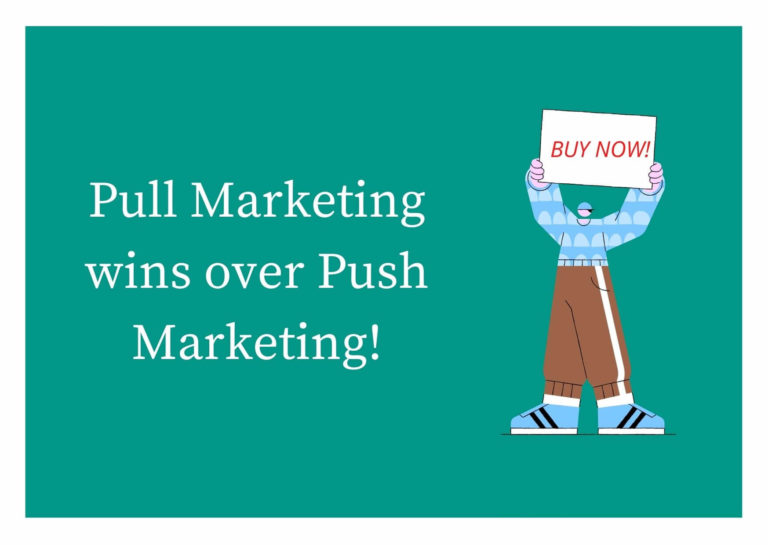
Content is The Heart of Every Single Digital Marketing Strategy
Content marketing connects and supports all the elements of your digital marketing strategy. Think of content marketing as the hub, with the supporting elements of your marketing plan being the spokes.
Content can be used for your blog, email marketing, social media, PPC ads and more. Therefore, having a solid content marketing strategy in place that supports each of your digital marketing campaigns can help you achieve your marketing goals and sales revenue targets.
For instance, if you want to run a PPC campaign to draw more traffic to your website. When the visitors arrive at your website, you need high quality, engaging content to keep them and have them return to your site again and again.
The quality of the content and their site visit experience will determine whether they will sign up for an offer and supply you with their email address. And your email base also needs quality content based on their relationship to your company and stage in the buying cycle.
The bottom line is, you need to Nurture Your Prospects With Online Content.
Very Attractive Return on Investment (ROI) on Consistent Content
So, what kind of Return on Investment can a business anticipate with a good content marketing strategy?
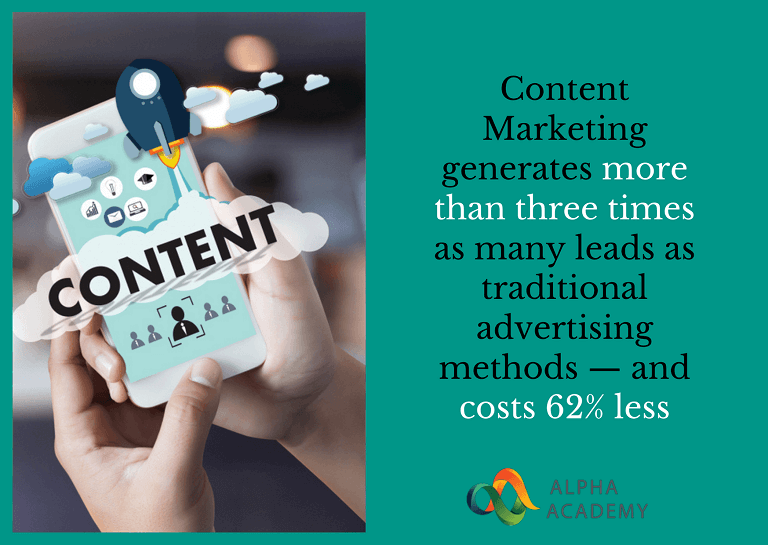
Source: Content Marketing Institute
So it’s safe to say that content marketing precedes traditional marketing tactics by a landslide. And at the same time pulls in significantly more website visitors and leads. The consistent production of quality content boosts website traffic, and as traffic increases, so does conversion rate.
These conversions are extremely valuable because they are a building block for your sales funnel. The website visitors who convert have chosen to actively engage with your content by accepting an offer you display on your website. The offer may be an infographic, an informational blog, a white paper, or a complimentary consultation.
Content marketing is tailored for the buyer journey that provides valuable information at each stage of the buying cycle. In this way, website visitors can convert to leads, and from there to new clients. It is a constant flow of content that nurtures prospects through each step.
Great Content Strengthens Your Customer Relationships
Content helps you to build and strengthen relationships with your customers! It doesn’t just attract new customers; it enables you to maintain a strong relationship with your current customers.
For instance, look at this research on customer retention:
- Building a business relationship with a new customer is a whopping 16 times more expensive than cultivating an existing customer’s loyalty.
- On average, a customer spends 67 percent more in their third year with your business than what they spent in the first year.
- According to research firm BIA Kelsey, more than 60% of SMBs say that half of their revenue comes from repeat customers.
So we can see that loyal customers are critical for the success of any business. And obviously, content plays a huge part in that process.
Content that provides value to your customers will help increase brand loyalty by strengthening those relationships with your customers online. This also encourages repeat sales with cross-selling and up-selling opportunities. But it is imperative to keep customers engaged with great content explicitly developed for post-purchase consumption.
The result is, You Develop That Customer Into A Powerful Advocate For Your Company!
Set Yourself Apart From Your Competitors With Unique Content
In today’s fast-paced world, most businesses operate in an insanely competitive environment. For instance, consider these scenarios mentioned below:
- Established companies encounter new competition from start-ups run by millennials.
- Small, niche businesses compete with a much larger competitor that has access to more resources.
- More and more vertically integrated companies emerge, creating new competition in the marketplace.
These are pretty common phenomena these days, presenting an ongoing challenge to business in the ever-shifting competitive landscape. Especially for a small business. You must differentiate yourself from your competitors for your survival.
Content marketing is the perfect solution to this! Content marketing can help small businesses effectively set themselves apart in their respective industry or marketplace. With great content, you can Demonstrate What Makes Your Company So Great and Unique.
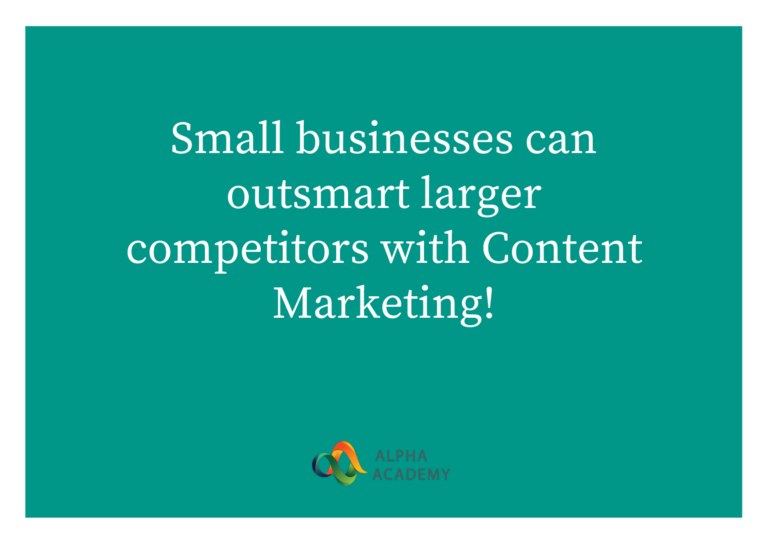
A strong content marketing strategy is what enables even small businesses to take on mighty competitors.
Find all the qualities that set you apart from your competition. Don’t shy away from your geeky, nerdy or playful side. People value something that is unique, genuine and just real. Your audience would also like to know about their potential favourite brand of choice!
Build your Brand Authority with Marvellous Content
Content marketing demonstrates your expertise by sharing valuable knowledge to help consumers make educated purchasing decisions.
The consistent production of great content shared with each blog post, infographic, or white paper helps build your brand authority. It also reaffirms your leadership position for your leads and customers.
As your brand authority increases, you will see more quality organic traffic to your website. Plus, the more traffic your website gets, the more people consume your content. The visitors who stay longer on your website and read more of your content are more likely to accept your offers or convert and become prospects, leads and sales. Quality content is one of the reasons for website visitors to return for more, save for later, or to share your content through social or email.
The end result is that your brand will be established in their minds as a trusted and highly knowledgeable source that can deliver a solution to their problem.
Here are some other reasons why you should use content marketing for your business
- Using a content marketing strategy is more cost-effective. It costs 62% less than traditional marketing approaches.
- Consumers want content now more than ever, as they make more informed buying decisions.
- Get a profound understanding of your ideal customer segment.
In this competitive business environment, present yourself as a credible and reliable supplier through your content.
Game-Changing Content Marketing Efforts For Your Business!
As Lee Odden said, “Content isn’t king, it’s the kingdom.” His words are enough to demonstrate how critical content marketing efforts are.

Also, 90% of organizations use content in their marketing efforts. So, how can you use it to be successful in your business? Here’s how –
Create Content With Purpose
Are you guilty of creating and publishing content simply for the sake of doing so? If yes, you’re not alone. But it shouldn’t be that way.
Every single piece of content you produce needs a purpose. So, ask yourself:
“As a brand, why do you produce content?”
“What is the Purpose of Content?
If there’s no real purpose behind the content you’re producing and no goals in place, that can result in a significant waste of resources. For instance, the purpose of your content could be to-
Educate the Audience
When it comes to creating content that educates, you need to take the time to understand the questions your audience is asking and conduct a detailed content gap analysis against competitors.
Drive Social Engagement
A 5,000-word guide written with the intention of ranking on the SERPs is more likely to tank on social media. But we all know that video does well across social platforms, as do images, quizzes, and other fun, interactive formats.
Rank on the SERPs
When your content aim is to rank, you need to focus on what will result in that happening rather than falling into the trap of producing sub-par 1000-word blog posts.
Content doesn’t have to be produced for the sole purpose of ranking or earning links, as long as you have to justify how it plays a role in the wider strategy.
However, it’s better to not be tempted to utilize the same content for different purposes if it is quite difficult to do so.
Rather, focus on seeing great results from the main goal and move on to produce a different type of content to meet your other goals.
Because let’s face it, not every piece of content will tick all the boxes.
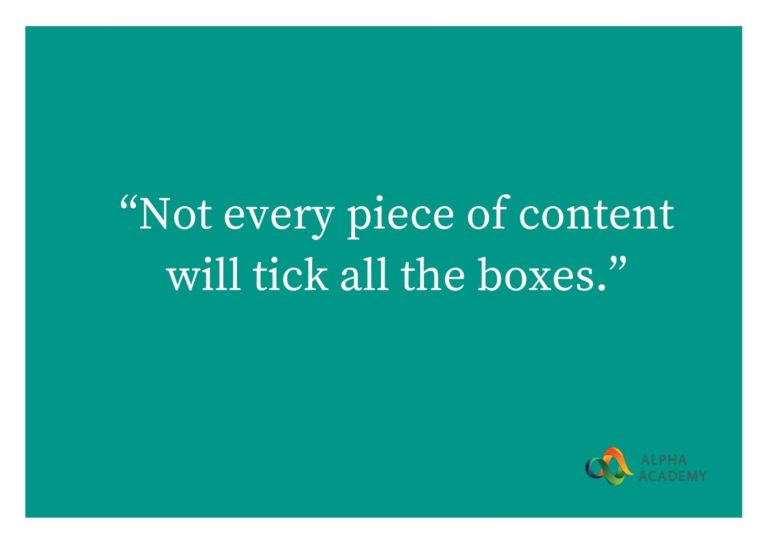
Here are some other goals and objectives that you can focus on in your content marketing strategy.
Brand Awareness
Brand awareness is one of the most prevalent goals of any content marketing strategy. That is because high-quality, purposeful content has the ability to showcase your company’s expertise, leaving readers pleasantly satisfied.
Consistently producing high-quality content that speaks to your target audience’s pain points will position you and your company as a helpful, knowledgeable subject-matter expert. Then, you can build trust with your audience members and increase the likelihood that they’ll think of you when they need what your company has to offer.
Brand Loyalty
Brand loyalty is something businesses should aim for. Because building a business relationship with a new customer is a whopping 16 times more expensive than cultivating an existing customer’s loyalty.
When a reader finds themselves consistently reading your brand’s content, they will start to see your brand in a new light, not just in terms of credibility, but also in terms of likeability.
Customer Awareness
An educated client is a happy client. Providing potential customers with helpful information is one of the most efficient ways of doing content marketing.
You can start off by writing down the questions that your sales team constantly hears from clients. Those questions will spur brand-new ideas for articles that your readers will find valuable. They might even convert a few hesitant leads to turn into customers.
Customer Engagement
Publishing an article and responding to the comments or questions from current or any potential customers is an excellent opportunity to connect. This type of engagement makes your company seem more humane — giving your brand a well-informed, expert personality. This is important because some customers want to buy from brands with a personal touch and not just a label.
Talent Recruitment
You can use content to showcase your company mission, vision and culture via meaningful content. You want to employ people who appreciate thoughtful, honest and practical content.
So decide what your company’s core values are, and create content that highlights those values and illustrate what it’s like to work at your company. Embody those values in everything you do as a company and portray them in all the content you create. You can use content to recruit the kind of talent you’re looking for.
Content marketing is intended to educate, entertain, provoke questions and answer them. It is considered the next level of advertising that readers actually want and enjoy; if it’s done right.
If you align your content with the right objectives, it can breathe life into your marketing efforts and form genuine connections with your target audience and customers.
Create Content That Resonates With Your Customers
What is the most crucial thing in content marketing? CONTENT!
Content is what will ‘make or break’ your content marketing efforts. If your content isn’t unique or does not resonate with your customers, then it’s just a waste of your resources.
So here are a few tips to produce content that will resonate with your customer.
1. Know What Your Customer Wants
Please do your research first. Find out what your customers want, what they talk about and what connects with. Dive deep into recent search trends and social conversations. Let these findings guide you to produce content that resonates with your target audience. For instance, if you work for fitness apparel, find out what your consumers are saying about fitness rather than just apparel.
2. Answer Frequently Asked Questions From Your Audience
Creating blog content is not as easy as it seems. But a good way to start creating authentic content is to think about what queries your target audiences have and how you can help them. Strategically target your blog content to focus on helping solve problems, give valuable advice and point people in the right direction. This will make your content more authentic, relatable and shareable.
3. Establish Thought Leadership
Content marketing is more effective when you approach it as thought leadership, rather than blatant self-promotion.
Demonstrate how much you know about a topic and offer helpful insights. Don’t be afraid to react to the current news or environment and engage in discussions that matter to your audience and you. This will help you build trust and gain credibility in the eyes of your audience.
4. Treat Content As Branding, Rather Than Sales
People usually search for content because they want answers or solutions. If they are not in a buying phase, sales pitches will not be welcomed with open arms.
The days of traditional push marketing are over, saying ‘buy now’ doesn’t have the same effect it did before. Therefore, extend your brand by acting as an expert in your field. Share your knowledge and expertise and let your branding do the sales.
5. Wait and Just Think, “Would I Want To Read That?”
No one likes aggressive or blatant ‘plug’ or sales approaches. So think of your blog post as an opportunity to engage, entertain and educate people. Don’t bring your products unless it’s in the context of a customer story, that makes it more relevant. Create content to showcase whatever you can do better than anyone else. After all, quality speaks for itself. Use a variety of resources like Essay Tigers or Grammarly to check spelling and punctuation.
Demian Farnworth shared his wisdom on creating content –
“Here’s everything you need to know about creating killer content in 3 simple words: Clear. Concise. Compelling.”
6. Tell Great, Authentic Stories
If you look closely, the most engaging and authentic blog posts are the ones based on real-life stories. They inspire people to learn more, ask questions and share with others. If you integrate an exceptional story with powerful data, images and testimonials, it will make your blog feel like an engaging conversation.
7. Stay True To Yourself
An important recommendation for blogging is to take the time to simply be yourself and not focus on sales.
Be transparent. Be honest. Be inviting. But most of all, BE YOURSELF.
The time, energy and resources you spend on your brand’s voice are precious, so instead of trying to sell through that content, build trust. Trust goes a long way than a quick sale. Gradually, readers will start enjoying your voice and want to hear more from you.

Utilise The Content Marketing Purchasing Funnel
In this era of technology-driven trends, consumers are well-informed and digitally connected. All kinds of information are available on the web, just one search away. So reaching the top of searches or ranking in SERP (search engine results page) means your content has to be more than perfect!
It is crucial to have a content marketing funnel (also known as the sales funnel) to boost your sales. The content marketing funnel demonstrates the process of lead conversion through a systematic content flow. The process continues until the target audience gets converted to end-users.
In other words, it’s a way of identifying and qualifying a sales lead. It helps to understand the stage of the buying process prospects are at, develop strategies to move them ever closer to the sale, and quantify them at each stage to develop a sales forecast. However, the practice has become more about content marketing and measuring conversions.
We break down this funnel into 3 regions for simplicity – top, middle and bottom of the funnel. And then, content marketing is used to nurse them through the funnel to produce a sale.
Here is how the content marketing funnel works:
The Top-of-Funnel (TOFU):
At the TOFU stage, prospective customers identify a problem they need to solve, and they begin researching solutions. This discovery stage (ToFU) allows readers to get attracted to the content. You can create content to educate them and provide them with information to help them understand which solution is best for their problem.
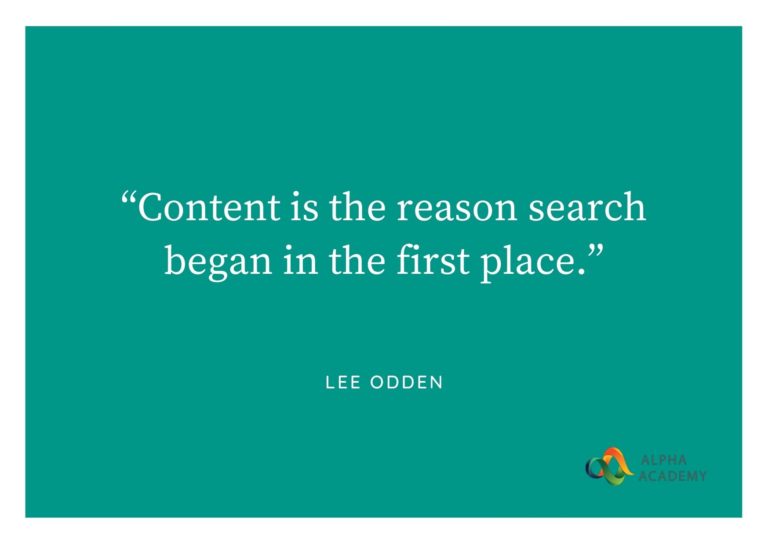
The Middle-of-Funnel (MOFU):
After initial research, prospective customers evaluate the options they have identified to solve their problem. Helpful, exceptional content during this stage of the funnel educates leads on their various options. You can nurture them to narrow down their options and get closer to a final purchasing decision.
Roughly 86% of marketers use the second stage, the consideration stage (MoFU), to establish trust and relevance from their target audience. A SEMrush report states that nearly 40% of content types are product overviews, and 30% are case studies.
The Bottom-of-Funnel (BOFU):
At this stage, leads are ready to convert or decide what the best solution for their problem is. Some buyers at this stage need a little push, which can be proposed in the form of a special offer, discount, or promotion. The sales team is the most involved at this stage, so the content must align with what they need to close the sale.
This last step draws interested readers to generate revenue via infographics, checklists, e-books and more. 28% of the content remaining at the conversion stage (BoFU) are infographics, while 27% involve checklists. In the words of Marcus Sheridan, “Great content is the best sales tool in the world.”
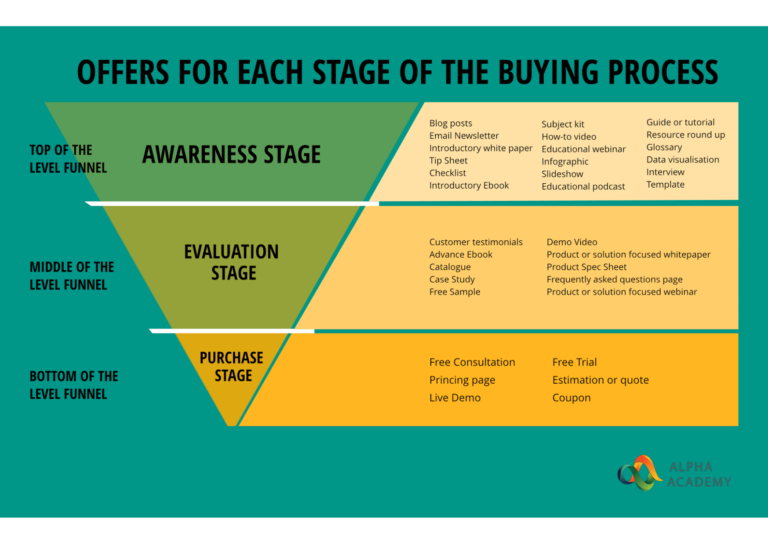
Once the audience reaches the last phase of the funnel, they become your loyal and revenue-generating customers
Make Social Media Your Friend
In the words of Jay Baer, “Content is fire. Social media is gasoline.” Social media can be a powerful weapon if used effectively. With almost 3.96 billion people using social media platforms, you can’t ignore the need for content across social media channels. This roughly translates to 58.11 per cent of the world’s entire population. Therefore, you need to ensure that you use it as efficiently as possible.
![]()
Content marketing strategy must come before your social media strategy. Social media can help marketers be more informed about their target audience, likes, dislikes, and interests to create a better content marketing strategy to attract such customers.
To make the most out of social media channels, invest time and money in content marketing strategy for social media channels. Remember to post frequently and engage your audience to keep them talking about your brand. These conversations might prove to be the game-changing advantage you need for the success of your business.
Customer Engagement and Content Goes Hand-in-Hand
Since the rise of the Internet and especially social media — customer behaviour has changed significantly. Not only has social media become a vital tool for any marketing strategy. A Study claims that almost half of Facebook users have “recommended” a brand. Moreover, customers today also expect their relationship with brands to go over and beyond the use-value of their products.
Instead of the traditional “push” strategy used in marketing campaigns, engagement marketing pulls people in the funnel. It does so by telling compelling stories, driving conversations, and addressing customer pain points, wants, and interests. Here, the goal is to connect with customers in a deeper, more sustained relationship with any given product or brand.
If you only talk to customers about what you sell them, they recognise it and tune out. So the motto for engagement marketing should be ingrained in marketers minds, “Ask not how you can sell, but how you can help.”
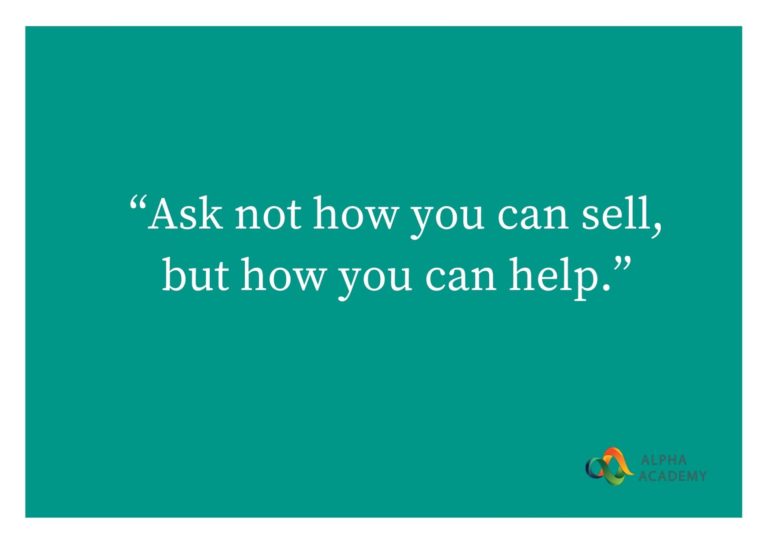
Here are some critical tips for you to authentically engage with your customers to get the best out of content marketing.
Offer Customers Real Value
Engagement marketing implies leading with content, not products. And that content must be genuinely valuable to your customers for it to be a meaningful engagement strategy.
It’s advertising as a service, as opposed to advertising as an interruption. So essentially, you are offering your customers value in exchange for their time and attention.
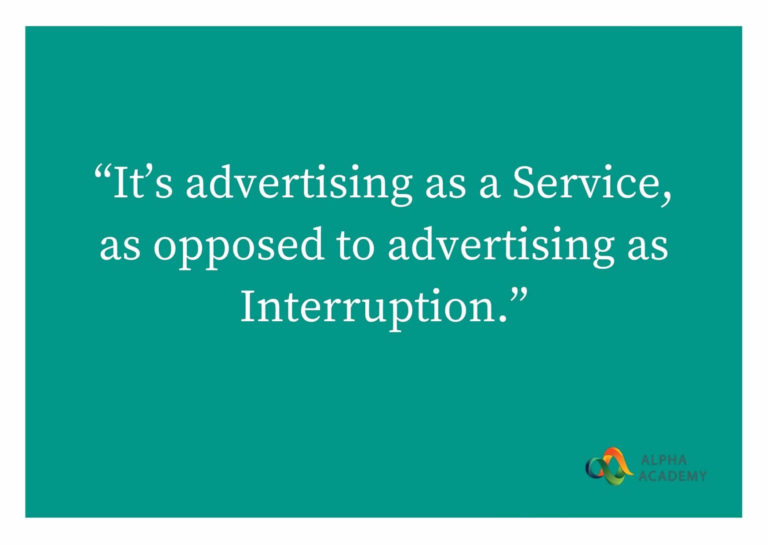
Build a Community
An indispensable part of engagement marketing is giving customers an opportunity for dialogue—not only with your brand but also with each other. You could get the conversation started by asking for their opinions and insights, weighing in on exciting trends, and bringing customers together with online social-sharing communities.
When your consumers engage with you on social media, you can leverage their loyalty to your brand. Loyal consumers might just be the evangelists that help spread the word.
Inspire People
People always value useful information and convenience, but they also want to feel inspired and moved!
One way you can inspire your consumers is to share your brand’s vision. Essentially, you’re trying to paint a picture of the future, inspiring and showing that you play a vital role in that future. It is especially relevant for companies who build next-generation technology.
Another great way to inspire your audience is to make your brand an agent of social impact. For example, take the marketing initiatives of Toms, the e-commerce company that promises if you buy a pair of its shoes, it will give a pair of shoes to a needy child somewhere in the world.
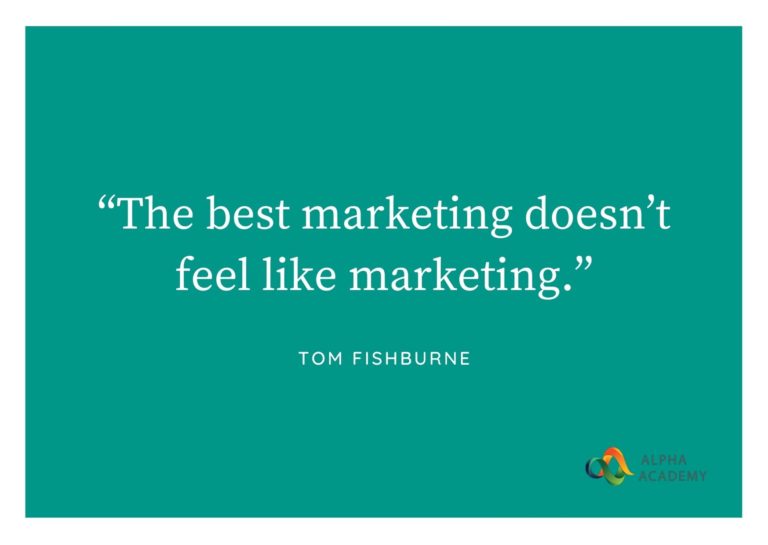
Develop an Emotional Connection
Marketing works best when the customers feel like they have a genuine relationship with a brand – a relationship that is interesting, mutually beneficial, and steady. And that relationship needs to be sustained.
The ultimate goal of customer engagement is to build an emotional connection with the brand. It’s not just a single transaction, but an ongoing conversation. Instead, it is a process that leads to intimacy and advocacy. You can’t expect your customers to tune in only when you have a product to launch.
You need to have a constant presence and keep the conversation going. Part of what it means to have an “always on” approach in marketing is that you have to be in constant dialogue with your customers.
Measure Your Content Engagement
In this low-attention economy, measuring content engagement can give us an indicator of your website’s success. And content engagement metrics are valuable because they show how your content strategy aligns with user interest.
Customer engagement is also related to the overall profitability of your business. Because engaged users are more likely to purchase, become repeat customers, and share the product or service with other people.
For most businesses, engagement is the primary objective of producing content. You want your target customers to consume it and connect through your content. But how do you know if it’s actually working? How do you understand your content’s impact and know the actual value of content engagement?
Content is what drives your business. It attracts buyers to your brand and the solution you offer to help them meet their challenges. And while some may argue that content is subjective, the reality is that it’s possible to measure the impact of your content.
In fact, 79% of B2C marketers use engagement metrics to measure the performance of their content.
Key Metrics to Measure Your Content Engagement
There are many potential content engagement metrics you can track. Still, it’s best to focus on a few metrics that give you the most relevant information to improve your content strategy. Here are some of the most common ones for you to consider.
1. Unique Pageviews
Pageviews or traffic volume of a specific page is a metric that pretty much everyone tracks. It’s straightforward to measure and a more general metric than many others, but don’t make the mistake of thinking that it’s the most vital metric to measure.
For instance, if your online campaigns drive many people to your site, your page views and traffic will increase, but it doesn’t necessarily tell you anything about how engaging your content is.
Regardless, as a simple rule of thumb, when your page views increase, it means that the changes you implemented are working in terms of driving traffic.
2. Time Spent on Page
Time spent on a page shows how much time users spend looking at a particular piece of content on a site. Actual time spent on the page is critical to measure content engagement. Because it indicates that the longer they linger, the more they read or watch content. But, it isn’t the same as the session duration found in Google Analytics.
If the time spent on-page is very short, it indicates that users are clicking through to your content and then abandoning it because they’re not very engaged, which is a very bad sign.
3. Bounce Rate
A bit closely related to ‘time spent’ is the bounce rate. Generally, the bounce rate is inversely proportional to the average session duration. That means, as the bounce rate increases, the average session duration decreases.
Your bounce rate shows how many people click through to your site and then leave after viewing only one page. Nevertheless, a high bounce rate isn’t necessarily a bad sign. Because it could also mean that users are finding exactly what they need very quickly. Still, it’s worth keeping an eye on your bounce rate.
The bounce rate can be high for several reasons, such as –
- Your CTA or offer is not clear enough.
- Your content is not what they expected.
- The content was not engaging and they got bored.
- You’re not offering anything unique
4. Conversion Rate
Conversion rate is one of the most important metrics to track for most businesses. The conversion rate shows the percentage of website visitors that complete your desired actions. For example,
- Purchase any of your products or services.
- Download your app, e-book, etc.
- Contact your business or submit a form.
- Engage with your website in some way.
But not all content has a clear conversion goal. If you want people to sign up to your mailing list or purchase your products after reading or watching your content, then the conversion rate is directly linked to your marketing goals.
And a high conversion rate is always a great sign as it shows your content is engaging to your audience. It also shows that your marketing strategy is effective.
5. Social Media Metrics
Social media is an indispensable part of content marketing. So don’t forget to track the performance of your content on all of your social media channels. Social networks have the potential to drive a significant amount of traffic to your site. More importantly, it can be an effective way for you to build brand awareness and trust.
It’s good to have a high number of social media followers, but this metric usually isn’t the most important one to track. Rather, pay attention to how many people comment on your posts, retweet and share your content with their audiences.
A share on social media is equivalent to a personal endorsement of your content, so it’s a strong indication of customer engagement. Typically, social media engagement is measured as the combination of likes, comments, shares, which is divided by the number of reactions on the post.
Beware of Content Burnout
In a world where content is floating around everywhere, content burnout is a real thing. So beware of content burnout.

The buyers and customers nowadays are more informed than ever. They want specific information, and they are unwilling to settle for content that misses the mark.
This is why people with buying intention are increasingly relying on word of mouth, independent third parties or influencers, industry forums and peers to get the information they need.
According to Sitecore, the actual cost of content that misses the mark is –
- Poor customer experience
- Missed revenue opportunities
- Lost internal productivity
- Inability to scale
Ironically, many companies tend to kick the can down the road, and it is turning into a sea of wasted resources. To avoid that, be aware of these three things that contribute to the demise of content.
1. Inside-out Content Strategy
Most content is developed from the inside out. That means various internal teams believe the customer “needs” to have this information, which isn’t necessarily right.
What initially starts as a genuine desire to deliver differentiated value — turns into an easier way out. Because it’s easy to just create content and get on with life. And along the way, motivation to meet the buyers’ needs is lost.
2. Excess Number of Channels
The second one refers to the overwhelming number of channels and their constantly evolving productiveness. Determining which channel and format to use for each asset and which audience is enough to give someone a migraine. While omnichannel marketing is the remedy, stitching these systems together is hard.
3. Content-centric Lead Generation
The third uses content as the tip of the spear. Buyers are looking for more in the moment, contextually relevant ways to learn about brands. As per Content Marketing Institute, 91% of B2B marketers use content marketing to reach customers.
Related:
1. Digital Marketing Strategy: 7 Effective Ways You should Consider
2. The Future of Freelance Digital Marketing
3. Digital Marketing Basics for Beginners: Ultimate Guide for skeptic mind
4. Digital Marketing Apprenticeships: A Guide for Beginners
Conclusion
It’s the content that helps people find you. Or, it might be your content that makes people fall in love with your brand. Even though many more layers of content usually finesse a conversion, content is key here.
More than ever before, people want to feel like you, as a brand, care about them. The world is getting louder and noisier than ever before, and attention is the most valuable resource. So utilise it to your advantage and let your content serve its purpose.
Improve your brand reputation and build trust, influence conversions, enhance SEO efforts through content marketing. Content Marketing is the heart of your digital marketing strategies and an indispensable part of it. Putting your effort into Content Marketing can be the ultimate game-changing decision for the success of your business.
















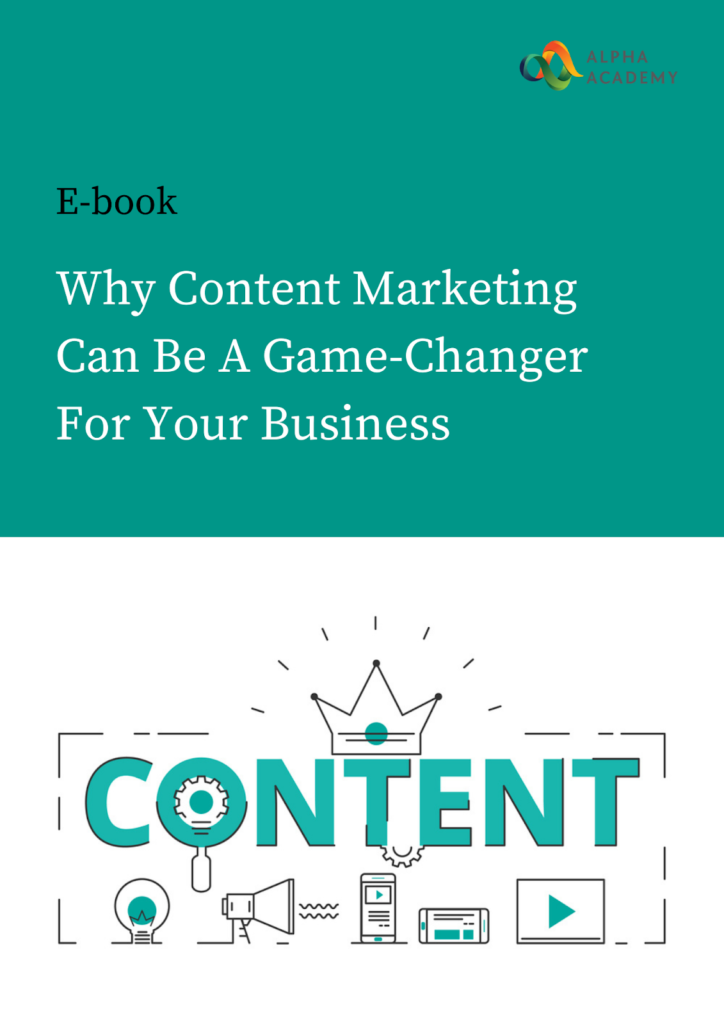
0 responses on "Why Content Marketing Can Be A Game-Changer For Your Business"